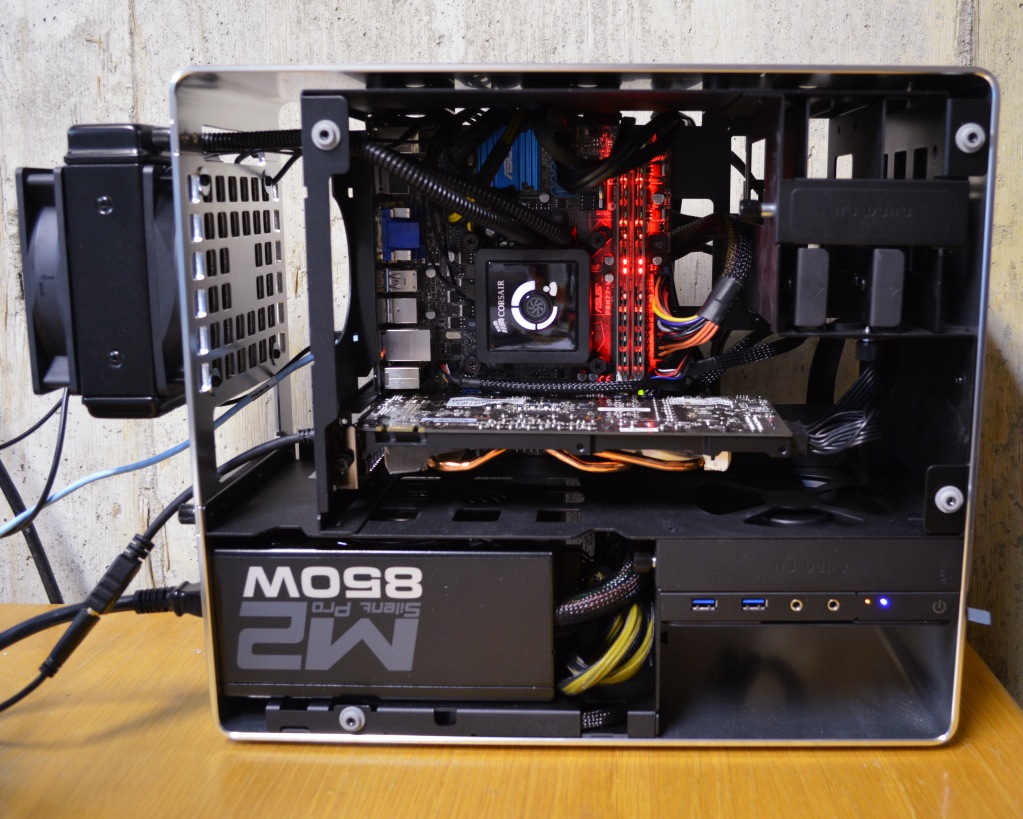THE SSD REVIEW TESTING PROTOCOL
At The SSD Review, we test our SSD’s slightly different depending upon the drive’s marketed purpose, that of a consumer or an enterprise focused SSD. For a consumer SSD, our goal is to test in a system that has been optimized with our SSD Optimization Guide, however CPU C State alteration may or may not have occurred depending on the motherboard and BIOS configurations. Benchmarks for our consumer tests are that of fresh drives, so that we can verify that the manufacturer’s specifications match the SSD. Additionally, we also try to include links to the benchmarks used in our report so that you as the reader can replicate our tests to confirm that your SSD is top-notch.
SYSTEM COMPONENTS
This Test Bench build was the result of some great relationships and purchase; our appreciation goes to the below mentioned manufacturers for their support in our project. All of the components we use for testing and evaluation can be easily purchased at a relatively affordable price. The links provided below can assist in pricing, as well as availability for those of you who may find interest in our equipment.
| PC CHASSIS: | InWin 901 Mini-ITX Chassis |
| MOTHERBOARD: | ASUS P8H77-I Mini-ITX |
| CPU: | Intel i7 2600 CPU |
| CPU COOLER: | Corsair H80 CPU Cooler |
| POWER SUPPLY: | Cooler Master M2 Silent Pro 850W |
| SYSTEM COOLING: | Corsair Chassis Fan |
| MEMORY: | Crucial Ballistix Tactical Tracer 1600 MHz |
| GRAPHICS CARD: | EVGA NVIDIA GeForce GTX 560 Ti |
BENCHMARK SOFTWARE
The software used for today’s analysis is typical of many of our reviews and consists of ATTO Disk Benchmark, Piriform Speccy, Crystal DiskMark and QuickBench. In consumer reports, we prefer to test with easily accessible software that the consumer can obtain, and in many cases, we even provide links. Our selection of software allows each to build on the last and to provide validation to results already obtained.
PIRIFORM SPECCY
Piriform Speccy is a great tool for checking the status and health of your computer system. It provides you with brief summary, or a detailed look, at your operating system, CPU, RAM, motherboard, graphics, storage, optical drives, audio, peripherals and network.
Right off of the bat, Speccy shows us that the Kingston flash card is formatted in exFAT to accompany the capacity that is larger than 32GB. When looking at the actual storage on the flash card, we can see that the total amount of capacity is just over 64 GB, but the usable capacity is 59GB, which is due to the formatting of the card.
ATTO Disk Benchmark is a relatively easy-to-use benchmark tool, which happens to be the benchmark of choice for many manufacturers. ATTO uses compressible data rather than random data, which results in higher performance and thus, higher benchmark scores. In our testing, we have selected the transfer size to range from 0.5KB to 8192KB, and have set the total length of the test to be 256MB.
Taking a look at the compressible data, ATTO demonstrates that the Kingston flash card pumps out a read speed of up to 89 MB/s, as well as a write speed of 72 MB/s. When comparing to Kingston’s listed speeds, the read speed is spot on, but the write speed comes in just a little lower than we would have liked to see.
CRYSTAL DISK BENCHMARK VER. 3.0.3 x64
Crystal Disk Benchmark is visually straightforward, and is used for measuring the speeds at which your storage device reads and writes in both compressible (oFill/1Fill) and random, mostly incompressible, data. Random data samples are more consistent with everyday use of a computer, such as transferring videos, pictures and music. We run the benchmark twice, using oFill data first, and then proceeding to test with random data. Since results typically return with nearly identical scores, we only include the results for random data samples.
Now that we have switched over to data that is very similar to 4K and 2K video, we see that the Kingston flash card performs better than when using compressible data. The read speed is nearly perfect, and the write speed has actually increased from our previous results with ATTO.
QUICKBENCH VER. 4.0
QuickBench is another benchmark tool used to measure the transfer speeds and performance of storage devices. QuickBench is a good tool for confirming the previously produced read and write speeds seen above.
As a comparison, we always try to include a multitude of benchmarks to provide more accurate and consistent results. QuickBench shows us that the Kingston SDXC flash card has an average read speed of up to 81 MB/s, and write speed of up to 71 MB/s.
 The SSD Review The Worlds Dedicated SSD Education and Review Resource |
The SSD Review The Worlds Dedicated SSD Education and Review Resource | 


Nice review Chris ^^
Wow, these 4K speeds are really depressing. Although it’s expected, since sequential workload is most expected on these kinds of cards anyway..
I hate SD cards of any kind. Use one of those Thunderbolt portable drives that consist of two SSD in RAID 0. No more speed problems, and you’ll get tons more storage, too.
SD card lover when you consider that they are a necessity in photography. The fact that I have a 256GB SD card in my EOS 6D is as comforting as the fact that it’s performance (compared to that of only a short time ago) results in visible upgrade in HDR backlit shots where 3 shots are taken and combined.